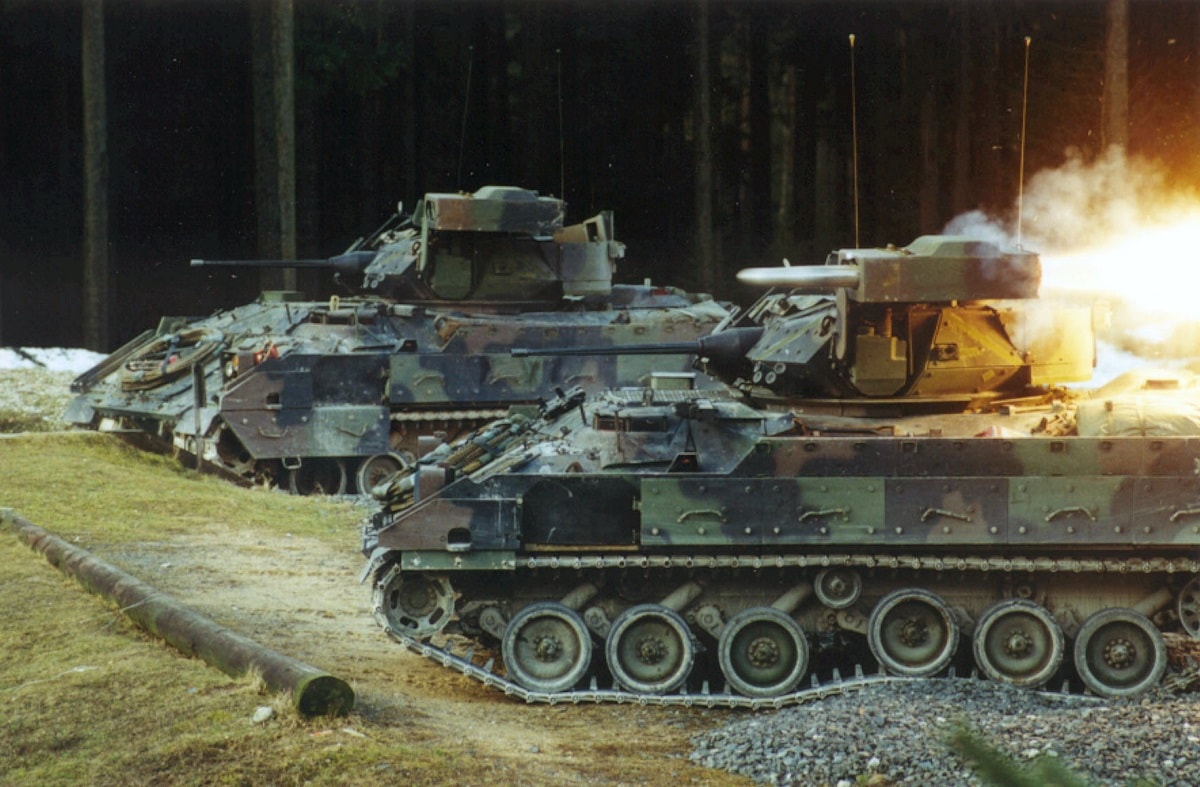Soldiers serving in the United States Army once again wear the “Army Green Service Uniform,” which was introduced in 2018 and was based on the “pinks and greens” officers’ service uniform worn during the Second World War and Korean War. However, the Army is now “going green” in a more significant way – as it is embracing “hybrid vehicle” technology.
AM General is expected to unveil a hybrid-electric version of its Humvee, dubbed the “Humvee Charge.” Its capabilities could meet the demands of the United States National Guard.
We’ll have the Humvee Charge in an exhibition soon and [we’re] really working hard to lobby with the Army to figure out where they want to deploy this first,” AM General CEO Jim Cannon told Breaking Defense in an interview at the Eurosatory 2022 conference in Paris earlier this week.
Cannon added that if any vehicle in the U.S. Army should be “electrified in some fashion,” he said it should be the Humvee – stressing that it isn’t a combat vehicle. He also noted that the National Guard fleet of Humvees is “beyond its useful life,” and “needs to be recapitalized.”
An Electric-Hybrid Bradley
However, the Army’s already eyeing a hybrid model of its Bradley Fighting Vehicle (BFV), and that would be the service’s first vehicle to go “green.” It was just in January that the Army unveiled the electrified Bradley prototype.
That effort, led by the Rapid Capabilities and Critical Technologies Office (RCCTO), was to help inform future hybrid electric technologies, and test the effectiveness of the Bradley Hybrid Electric Vehicle (BHEV), which could give Army senior leaders a decision point on whether or not to move forward.
“The BHEV prototype truly has the potential to improve how our Soldiers execute their missions while providing the Army with a cost-effective advantage on the battlefield,” said Stanley Darbro, RCCTO deputy director earlier this year. “We’re executing this approach through a 24-month rapid prototyping effort with the expectation it will provide proven increased operational capability for Army-wide application.”
Replacing the Bradley
The U.S. Army is still thinking beyond the Bradley, which was developed in the 1970s and first entered service in 1981. The Army’s Optionally Manned Fighting Vehicle (OMFV) program is now seeking to replace the aging Cold War-era BFV, and according to recent reports, hybrid power is also a major consideration.
There are currently five teams in a preliminary design phase, including Point Blank Enterprises, Oshkosh Defense, BAE Systems, General Dynamics Land Systems, and American Rheinmetall Vehicles. All of those entries are hybrid – as reducing dependency on fuel would be critical to the Army’s goal of developing a smaller logistics footprint.
The need for those efforts was highlighted by Russia’s missteps in its unprovoked invasion of Ukraine this year, notably the logistics failures of effectively refueling and resupplying its convoy of armored vehicles. As a result of those failures, Russian armored forces came under repeated attacks, and losses mounted.
A hybrid vehicle would be less dependent on fuel supplies. In addition, going hybrid could reduce thermal and acoustic signatures, and even provide better acceleration. It could increase lethality by providing additional onboard power to support the various weapons.
Even as the OMFV moves forward, the Army will be conducting studies of its hybrid Bradley prototypes.
Beginning this month, the BHEV will undergo assessments at Aberdeen Proving Ground, Maryland where the test vehicles will be driven over rough terrain to measure performance. Later this year, the vehicles will be sent to Yuma Proving Ground, Arizona for additional field assessments and to compare performance data between the BHEV and non-hybrid electric Bradley vehicles.
Now a Senior Editor for 1945, Peter Suciu is a Michigan-based writer who has contributed to more than four dozen magazines, newspapers and websites. He regularly writes about military hardware, firearms history, cybersecurity and international affairs. Peter is also a Contributing Writer for Forbes.

